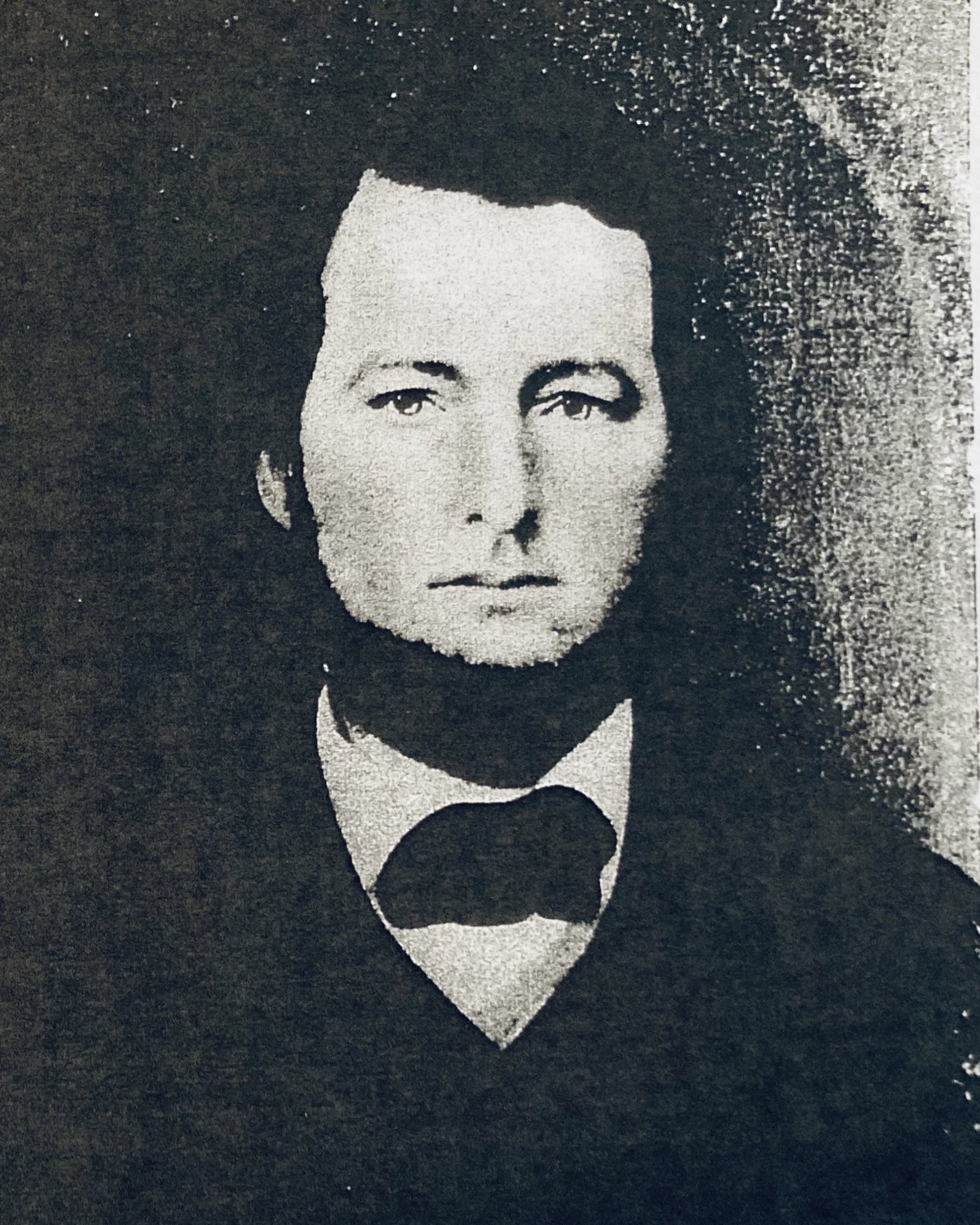
**This research was first published in the April 9, 2025 edition of the Chatham Star-Tribune newspaper as part of Kyle Griffith’s weekly segment entitled “Heritage Highlights.”
Robert Wilson Vaden (1828-1874)
Historically situated a couple miles south of Gretna, Galveston Mills had a history spanning nearly two centuries and prospered under the one family in particular. The Vaden family has deep local roots that trace back to Wilson Vaden and his wife former Miss Rebecca Giles, both of whom were born in Pittsylvania County a few years before the American Revolution. Their son Giles Henry Vaden was born in 1799, but he was not the “G. H. Vaden” associated with the mill’s history. Without delving too deep into the long history before it was named Galveston, county documents trace evidence of mills along Whitethorn Creek throughout the late 1700s and early 1800s. There have been several histories written about the mill, including “The History of Galveston Mills” by Giles Henry Vaden III (1937), as well as another publication by his brother Robert Carrington Vaden Jr. called “History of Galveston Mills, Inc.” (1953). Both publications are quoted in the book “Pittsylvania’s Nineteenth Century Grist Mills” by late county historian Herman Melton (1991).
The origin of the name Galveston, according to local legend, comes from a community member and military veteran named David Dyer (born in 1822). Col. Dyer’s tombstone states that he served in the 3rd Texas Mounted Volunteers during the Mexican-American War, which spanned between 1846 and 1848. After he returned from Texas, he is said to have brought the name of the busy port city of Galveston with him. Over 1,200 miles away in Pittsylvania County, the little milling village adopted the name as well. A 1904 volume of the Galveston Tribune acknowledged the Virginia post office in an article titled “The Four Galvestons,” and identified the others in Cass County, Indiana and Floyd County, Kentucky.
In 1852, the Galveston Post Office was established under Rev. Beverly A. Davis, who was at that time the owner of the mill and a Methodist clergyman. In his grist mill book, Melton provided the deed research showing that in 1857, the property interest was held between three individuals, including half ownership to Robert Wilson Vaden (born 1828), one-fourth to Stephen D. Tucker, and one-fourth staying to Rev. Davis. The 1860 census listed R.W. Vaden as a lumber dealer, living with his wife Mary and their four young children. Adjacent to them, John E. Bowler worked as a miller. As of 1866, Vaden fully owned the mill and it remained in his possession (Melton).
After R.W. Vaden’s death in 1874, the family business continued under his son, Giles Henry Vaden II (1852-1926), for more than four decades. The 1880 census listed him as a lumberman living with his younger brother Robert Jr. who also worked the sawmill. Giles married former Miss Eliza Caroline “Carrie” Tate, who also came from a family of merchants. Her father ran a store in Chalk Level and her mother’s side was a Whitehead of the well-known Chatham family. Together Carrie and Giles raised a large family of ten children (the youngest of whom was the late county historian Mrs. Madalene Vaden Fitzgerald).
Postal records from 1884 note that Galveston was a village of about forty or fifty people, and it is known that many farmers from other communities traveled to the mill. In 1890, the mill was one of the first in the area to update from using flat circular burr stones to the new and improved cylindrical roller mill process to grind wheat into a finer flour. Vaden’s 1937 history stated that “a camp house and stables were provided for the accommodation of customers” since a visit to the mill was no quick affair. The 1900 census listed Giles as county treasurer. Also boarding with his extensive family was Charles W. Motley, a hired bookkeeper. After nearly a century of business in competition with dozens of other local mills, Galveston became one of the most well-known and reliable in the county.

